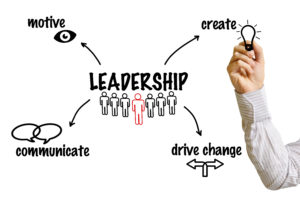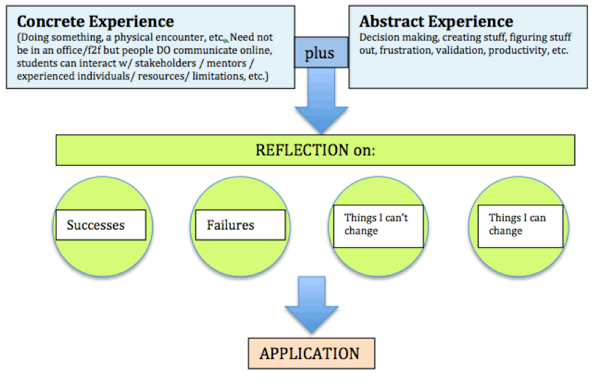Leadership is clearly more than seniority, a title and power. It’s a multi-faceted topic that leaders themselves are interested in studying, including Teresa Goode, faculty member at Northeastern University College of Professional Studies. Here, she shares tips on how she’s been able to apply a modern model of leadership to real people.
 When scanning stories about Angelina Jolie over the last few months, a question occurred to me. How did she transform from a wild young starlet, known for wearing her husband’s blood in a vial around her neck and kissing her brother on the lips, into a world-renowned humanitarian, movie star, mother of six and spokesperson who bravely announced her mastectomy? As I pondered this, I realized that Jolie is actually what I call a “transformational leader” and clearly demonstrates one of the transformational leadership models that I teach here in the Masters of Science in Leadership program at Northeastern University College of Professional Studies. The model is called the Five Practices of Exemplary Leadership.
When scanning stories about Angelina Jolie over the last few months, a question occurred to me. How did she transform from a wild young starlet, known for wearing her husband’s blood in a vial around her neck and kissing her brother on the lips, into a world-renowned humanitarian, movie star, mother of six and spokesperson who bravely announced her mastectomy? As I pondered this, I realized that Jolie is actually what I call a “transformational leader” and clearly demonstrates one of the transformational leadership models that I teach here in the Masters of Science in Leadership program at Northeastern University College of Professional Studies. The model is called the Five Practices of Exemplary Leadership.
While I knew this leadership model, developed by James Kouses and Barry Posner and described in their work The Leadership Challenge, applied to organizational leaders, Jolie helped me understand how it can apply to people in all walks of life.
Let’s explore the five practices as they relate to all kinds of leaders:
Model the Way
Leaders who model the way, exhibit two key behaviors. They “Clarify their Values” and “Set an Example.” Their actions are aligned with their values. When Jolie, one of the sexiest women in the world, announced that she had a double mastectomy and wanted to use her experience as a teachable moment to help other women, it was a powerful example of modeling the way.
Inspire a Shared Vision
Kouzes and Posner identify “Envisioning the Way” and “Enlisting Others” as two ways leaders can inspire a shared vision. Bill and Melinda Gates immediately come to my mind. They’ve established for their foundation a clear vision focusing on five areas: Global Development, Global Health, U.S. programs, Global Policy and Advocacy. They’ve also convinced other wealthy people, such as warren Buffet, to donate part of their fortune to their foundation.
Challenge the Process
How many of you reading this blog have an iPhone, iPad or Apple computer? Or perhaps the devices you use are enabled by the technology Apple developed. The transformation in technology wouldn’t be available if Steve Jobs had not “Searched for Opportunities” and “Experimented and Taken Risks”—two behaviors of exemplary leaders.
Enable Others to Act
Nelson Mandela, the iconic South African leader, exemplifies this. By “Fostering Collaboration” and “Strengthening Others,” he was able to successfully lead South Africa through the dismantling of apartheid while encouraging racial reconciliation.
Encourage the Heart
Leaders encourage the heart by “Recognizing the Contributions of Others” and by “Celebrating the Use of Values and Victories.” When thinking about his practice, I glanced at the Mighty Mouse trophy I won during one of my favorite jobs. I have long forgotten the accomplishment we celebrated, but I clearly remember the spirit of community and appreciation I felt when I won the award.
How about you? Can you think of a leader, friend, peer or family member who exhibits one or more of the practices of Exemplary Leadership?…



 This will come as little surprise to anyone who’s been following the increasingly wide inroads that MOOCs and online education have been making into traditional curricula—or to anyone who has spent time in higher ed. The
This will come as little surprise to anyone who’s been following the increasingly wide inroads that MOOCs and online education have been making into traditional curricula—or to anyone who has spent time in higher ed. The 


 “Nontraditional student” is commonly used to describe an enormous category of undergraduate college students who are unlike the “traditional” students who enroll in college full-time immediately after completing a high school education, are dependent on parents for financial support and don’t work full time. The term is widely used in the press—the Washington Post even used “nontrads” in a recent article—as well as by universities and even by the federal government’s National Center for Education Statistics in its
“Nontraditional student” is commonly used to describe an enormous category of undergraduate college students who are unlike the “traditional” students who enroll in college full-time immediately after completing a high school education, are dependent on parents for financial support and don’t work full time. The term is widely used in the press—the Washington Post even used “nontrads” in a recent article—as well as by universities and even by the federal government’s National Center for Education Statistics in its